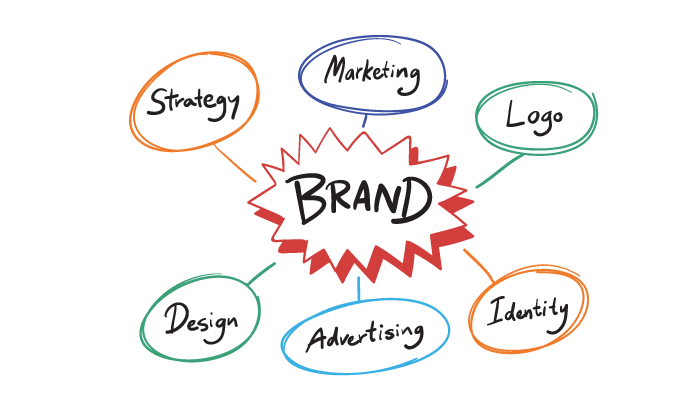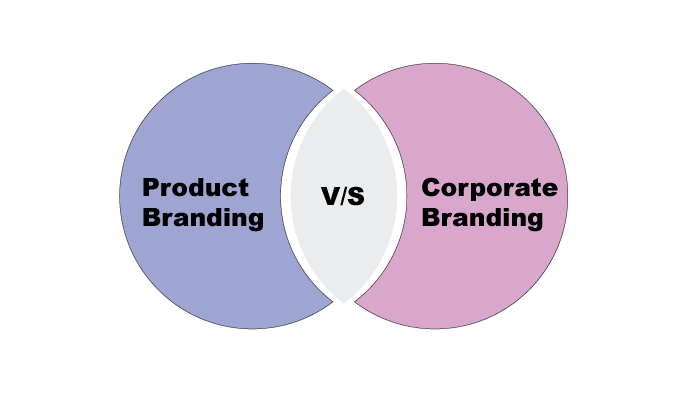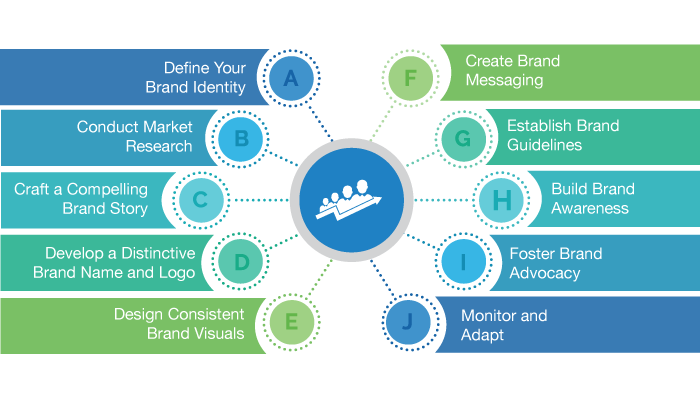Table of Contents
In the fiercely competitive market landscape, effective product branding has become a critical factor for the success and survival of businesses.
Branding goes beyond simply creating a logo or tagline; it encompasses the entire identity and perception of a product in the minds of consumers.
Now, this is a very important concept in the world of marketing and designing. And there are many people asking a lot of questions surrounding it. If you are one of those, this blog is for you.
In this blog, we will explore the concept of product branding, highlight the key differences between product branding and corporate branding, discuss the advantages of product branding, provide specific examples, delve into how to build a product branding strategy, and address some frequently asked questions.
Therefore, with this being said, let’s get right into it, starting with the basics.
What is Product Branding?

The term “product branding” seems quite self explaintory right? Even though it is, there’s more depth to the concept that one understands.
So, let’s first answer that most important question, what is product branding?
Product branding refers to the process of creating and promoting a unique identity and image for a specific product in the market.
It involves developing a distinct personality, value proposition, and perception around the product that resonates with the target audience.
Product branding encompasses various elements, such as the product’s name, logo, packaging, design, messaging, and overall positioning.
Now that you know what product branding is, you also understand why it’s important.
You see, people connect more with an identity then an inanimate object, that’s the entire concept product branding.
However, it’s quite easy to get confused between product branding and corporate branding. Therefore, let’s see how these two are different in the section below:
Product Branding vs. Corporate Branding

If you find yourself confused between corporate branding and Product branding, well, be at ease because you aren’t the only one.
In fact, majority of the people get confused between these two concepts, since they are two closely related, yet not the name.
Well, let’s see how these two differ from each other.
While product branding focuses on establishing a unique identity for a specific product, corporate branding aims to build and promote the overall identity and reputation of a company.
To further clarify differentiation, let’s look at some key differences. These are, as mentioned below.
Scope
Product branding is limited to a specific product or product line, while corporate branding covers the entire organization and its portfolio of products and services.
Objectives
Product branding primarily aims to differentiate and create a competitive advantage for a specific product, whereas corporate branding focuses on building trust, credibility, and goodwill for the overall company.
Audience
Product branding targets the specific audience that the product is designed for, while corporate branding addresses a broader audience that includes customers, employees, investors, and other stakeholders.
Now that you know that the clear difference between product branding and corporate branding, it’s time to learn the advantages of the using product branding in the next section.
Advantages of Product Branding

Whenever anyone is introduced to a new topic, there are always these questions: why are these important, why should I use them?
And product branding is also subjected to same questions.
Well, there are various advantages and reason to use this concept. We shall be discussing these advantages. They are, as mentioned below:
Product Branding, Differentiate
Product branding allows businesses to differentiate their offerings from competitors’ products in the market.
By creating a unique identity, businesses can stand out and attract customers who align with the values and characteristics associated with the brand.
Increased Customer Loyalty
Strong product branding creates an emotional connection with customers, fostering loyalty and repeat purchases.
When customers perceive a product as reliable, high-quality, and aligned with their needs and aspirations, they are more likely to develop a preference for that brand.
Competitive Advantage
Well-established product branding can provide a competitive advantage by capturing a significant market share and securing a strong position within the industry.
A distinct brand image can make it challenging for competitors to imitate or replicate the product’s success.
Brand Extension Opportunities
Successful product branding opens doors for brand extensions and the introduction of new products under the established brand.
When customers have a positive perception of a brand, they are more likely to try out new offerings from the same brand, increasing cross-selling and upselling opportunities.
So, these are the major benefits of branding a product. And with this out of the way, we shall be discussing some of the product branding examples.
Specific Product Branding Examples
If you want to learn something, it’s best to do in the way of examples. And what better way to understand concept of product branding, if not with product branding examples.
Here, we shall be discussing some of the discuss some of the world’s largest companies and how they use product branding to earn Billions.
These examples are, as mentioned below:
Apple

Apple’s product branding is known for its sleek, minimalist design, cutting-edge technology, and emphasis on user experience.
From their iPhones to MacBooks, Apple has successfully positioned its products as innovative, user-friendly, and premium.
It is the marketing prowess of Apple that has successfully grown the market of iPhone app development above android in past
Coca-Cola

Coca-Cola has built a strong product brand by associating its beverages with happiness, togetherness, and refreshment.
The iconic logo, distinct red packaging, and memorable marketing campaigns have contributed to its global recognition and popularity.
Nike

Nike’s product branding revolves around the idea of inspiration, empowerment, and athletic performance.
Their “Just Do It” slogan, combined with high-quality sportswear and endorsements from top athletes, has established Nike as a leader in the sports industry.
Now that you now about the different aspects of product branding, it’s time to learn to build our own product Branding strategy. Let’s discuss all about that in next section of the blog.
How to Build a Product Branding Strategy

Branding a product is easy when you work with product designing companies. However, it’s good idea to learn about the process used to create the strategy for product branding.
In this section of the blog, we shall be discussing each step required to product branding strategy. Therefore, with this being said, let’s get right into it.
1. Define Your Brand Identity
Begin by clearly defining your brand identity.
Determine the unique characteristics, values, and personality traits that differentiate your product from competitors.
Identify your target audience and understand their needs, preferences, and aspirations. This understanding will lay the foundation for your branding strategy.
2. Conduct Market Research
Conduct thorough market research to gain insights into the market landscape, your target audience, and your competitors.
Analyze customer demographics, behaviors, and purchasing patterns. Identify gaps in the market that your product can fill and evaluate how your competitors position themselves.
This research will help you identify opportunities to differentiate and position your brand effectively.
3. Craft a Compelling Brand Story
A compelling brand story is essential for engaging customers and building an emotional connection.
Create a narrative that communicates your brand’s origins, purpose, and values. Highlight what makes your product unique and how it addresses customers’ needs.
Your brand story should resonate with your target audience and evoke positive emotions.
4. Develop a Distinctive Brand Name and Logo
Choose a brand name that reflects your product and is memorable, distinctive, and easy to pronounce.
Design a visually appealing logo that represents your brand identity and conveys its essence.
Ensure that the logo is scalable and adaptable across various mediums.
5. Design Consistent Brand Visuals
Consistency in brand visuals is crucial for establishing a recognizable identity.
Develop a visual style guide that outlines the appropriate use of colors, fonts, imagery, and layouts across all marketing materials.
Consistency in visuals reinforces brand recognition and builds trust with customers.
6. Create Brand Messaging
Craft a clear and concise brand message that communicates your product’s unique value proposition.
Focus on the benefits your product offers and how it solves customer problems.
Use language that resonates with your target audience, emphasizing key selling points and differentiators.
7. Establish Brand Guidelines
Develop comprehensive brand guidelines that outline how your brand should be represented across all touchpoints.
These guidelines should cover brand voice, tone, style, and messaging guidelines.
Consistent brand representation ensures a unified and cohesive brand experience for customers.
8. Build Brand Awareness
Implement a multi-channel marketing strategy to build brand awareness.
Leverage both online and offline channels such as social media, content marketing, influencer collaborations, advertising, public relations, and events.
Create engaging and shareable content that aligns with your brand values and resonates with your target audience.
9. Foster Brand Advocacy
Encourage customer loyalty and advocacy by delivering exceptional customer experiences.
Provide excellent customer service, engage with customers on social media, and actively seek feedback.
Foster positive brand associations by supporting relevant causes and engaging in community initiatives.
10. Monitor and Adapt
Regularly monitor and measure the effectiveness of your branding efforts. Utilize analytics tools to track brand awareness, engagement, and customer sentiment.
Make data-driven decisions and adapt your strategy based on the insights gained.
Stay agile and responsive to changes in the market and consumer preferences.
So, this is how you create a product branding strategy. And with this out of the way, we conclude our blog.
Conclusion
Product branding is a powerful tool that breathes life into products by creating a unique identity, attracting customers, and fostering loyalty.
By understanding the nuances of product branding, businesses can harness its potential to differentiate themselves in the market, build strong customer relationships, and achieve long-term success.
With careful planning and execution, a well-crafted product branding strategy can transform products into enduring brands that resonate with consumers for years to come.
FAQ
Yes, depending on the target audience or market segment, a product may have different branding strategies. For example, a luxury version of a product may have a distinct branding strategy compared to a more affordable version targeting a different consumer segment.
No, product branding applies to both physical and digital products. Digital products, such as software or online platforms, can also benefit from effective branding strategies to differentiate themselves in the market.
Building a strong product brand is a long-term endeavor. It requires consistent effort, strategic planning, and continuous adaptation. The timeline can vary depending on factors like market conditions, competition, and resources invested.
Product branding refers to the process of creating and promoting a unique identity for a product. It involves establishing a distinct name, logo, design, and overall image to differentiate the product from competitors in the market.
Product branding is crucial as it helps build recognition, trust, and loyalty among consumers. A strong brand can influence purchasing decisions, increase customer engagement, and create a competitive advantage in the market.
To develop a strong product brand, focus on defining your target audience, creating a compelling brand story, designing a memorable logo and visual identity, consistently delivering on brand promises, and effectively communicating your brand values through marketing and advertising efforts.
Brand positioning refers to how a product is perceived in the minds of consumers relative to its competitors. It involves identifying and emphasizing unique selling points and key attributes that differentiate the product and make it stand out in the market.
Branding plays a significant role in customer loyalty. A strong brand creates an emotional connection with customers, fosters trust and familiarity, and makes customers more likely to choose the brand repeatedly, even in the face of competing options.
The key elements of successful product branding include a clear brand identity, consistent messaging, effective brand positioning, excellent product quality, exceptional customer service, and a deep understanding of the target market’s needs and preferences.
Branding can help expand a product’s market share by increasing brand recognition and recall, fostering positive associations and perceptions, attracting new customers through word-of-mouth referrals, and establishing a reputation for quality and value in the market.
Absolutely. In fact, product branding is essential for small businesses. A strong brand can level the playing field by differentiating a small business from competitors, building credibility and trust, and attracting and retaining customers who resonate with the brand’s values and offerings.
Social media provides a powerful platform for product branding. It allows businesses to engage directly with customers, share brand stories and content, gather feedback and insights, run targeted advertising campaigns, and create a community of loyal brand advocates.
Consistency is crucial in product branding. It ensures that the brand message, visual identity, tone, and customer experience remain uniform across all touchpoints. Consistency helps establish brand recognition, credibility, and trust among consumers.





No Comments
Comments are closed.